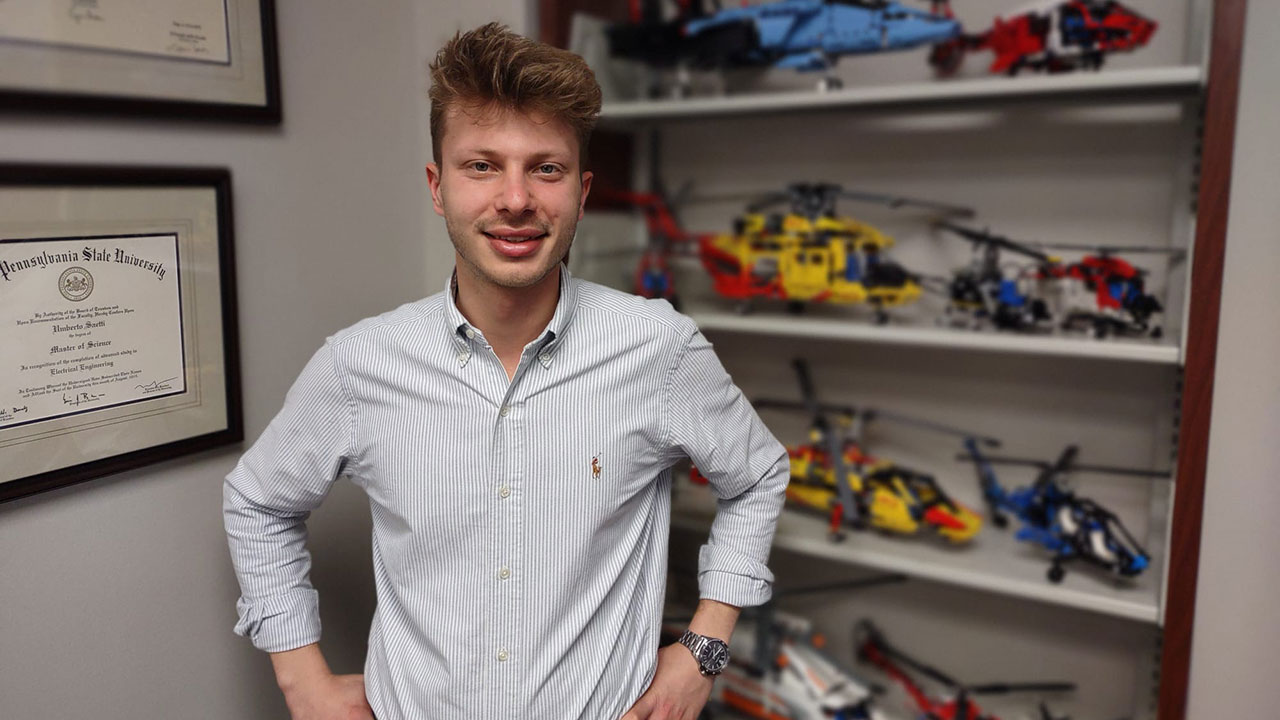Aerospace professor earns Office of Naval Research Young Investigator Award
Umberto Saetti believes modeling and simulating rotor downwash can develop safer helicopter landings at sea. The Office of Naval Research believes in Umberto Saetti.
Saetti, assistant professor in aerospace engineering, was recently granted a $510,000 Young Investigator Award from the Office of Naval Research (ONR YIP) for his upcoming study, “Linearized High-Fidelity Aeromechanics for Extended Reality Simulation and Control of Shipboard Interactions.”
Two Virtual Reality (VR) motion-base flight simulators, which will be used in the study, were recently installed within Auburn’s Extended Reality Flight Simulation and Control Lab.
The purpose of the project: find solutions that will preserve human life and prevent millions of dollars in aircraft from being destroyed. Take two recent U.S. Naval accidents, for example. In 2017 off the coast of Queensland, Australia, an MV-22B Osprey crashed into the ship-deck of the USS Green Bay, killing three and injuring many more. A near-miss occurred in 2015 when an Osprey landed short of the flight deck of an amphibious transport ship and hung off the rear of the boat. There were no injuries, this time.
The problem: heavy rotor downwash which, when interacting with the ship deck, hull or water surface, recirculate into the rotor, causing increased power demands and adverse handling effects.
“Modeling of the rotor downwash and its interactions with the sea surface, ship deck, and ship superstructures is key in understanding the adverse effect on the flight dynamics and performance of rotorcraft in shipboard operations,” Saetti said. “Moreover, the ability to replicate these interactions in real-time flight simulations could help supplement the creation of Launch and Recovery Envelopes (LREs) aboard naval vessels. This virtual approach to LRE certification could be used to replace potentially unsafe live simulations during a dynamic interface (DI) period.”
Saetti offered three components to the proposal: modeling, control of the downwash interactions, and pilot simulations in full-body haptic feedback suits (to occur in year three).
“If we are able to model and replicate these conditions in a simulator, we can gain more insight of what’s causing these effects,” he said. “And also, it would be in a safe environment.”
But how are these real-life characteristics replicated in a simulator?
“Suppose that you have your rotorcraft flying above the ship deck or sea surface. Then, to model the interaction of the rotor wake with the ship deck or the sea surface, you will need to introduce a phantom, or image, helicopter rotor below that surface as if the ship deck or water surface were a mirror. In general, the more surfaces you add that constitute obstacles you are trying to model, the more simulations get complex. In spite of this complexity, the proposal is not only modeling these interactions, but also try and find a way to simplify them.
“Once we know the interactions that occur, you will get basically use a procedure called linearization. We're making these complicated relationships between the rotorcraft and ship deck much easier, mathematically speaking, so that they're constituted by simple algebraic relationships.”
Saetti is no stranger to helicopter research for the U.S. military. His study, “State-Variable Implementation and Linearization of Simulations with Multi-Disciplinary Aeromechanics,” with the Vertical Lift Research Center of Excellence, earned a five-year, $571,000 contract last summer.
BY JOE McADORY

Umberto Saetti has a passion for helicopters and finding new ways to enhance safety.
Categories: Transportation, Engineering
Back to Articles




